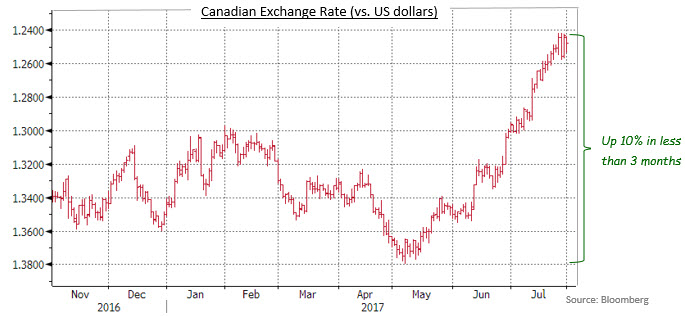Keep connected
Our investment management team is made up of engaged thought leaders. Get their latest commentary and stay informed of their frequent media interviews, all delivered to your inbox.
Jeff Herold
August 3, 2017
The Canadian market was the weakest of all global bond markets in July as a combination of strong domestic economic data and expectations of Bank of Canada monetary tightening caused yields to surge higher and prices to fall. In addition, investors realised that the Canadian bond market had become overvalued versus the U.S. one, and the selloff in July was a correction of previous outperformance of Canadian bonds. The FTSE TMX Canada Universe Bond index declined -1.90% in July.
Canadian economic data received throughout the month was quite favourable. The unemployment rate declined to 6.5% from 6.6% the previous month, as job creation was strong and the participation rate increased. As expected, the Bank of Canada increased interest rates for the first time in seven years on July 12th. The Bank also revised its economic projections: it now expects the output gap, a measure of slack in the Canadian economy, to disappear by the end of this year, rather than in mid-2018 as per the Bank’s previous forecast. Over the balance of the month, bond yields continued to rise as investors anticipated additional rate increases from the Bank. Of particular note, late in the month, Canadian GDP growth in May surpassed all economists’ forecasts and the year over year increase was estimated at an eye-popping +4.6% pace. This reinforced expectations of further rate hikes, and bonds weakened further.
The prospect of the Bank of Canada raising interest rates, plus the strong economic growth, resulted in a sharp appreciation of the Canadian dollar in recent months. In July, the Loonie rose to its highest level in
Our investment management team is made up of engaged thought leaders. Get their latest commentary and stay informed of their frequent media interviews, all delivered to your inbox.